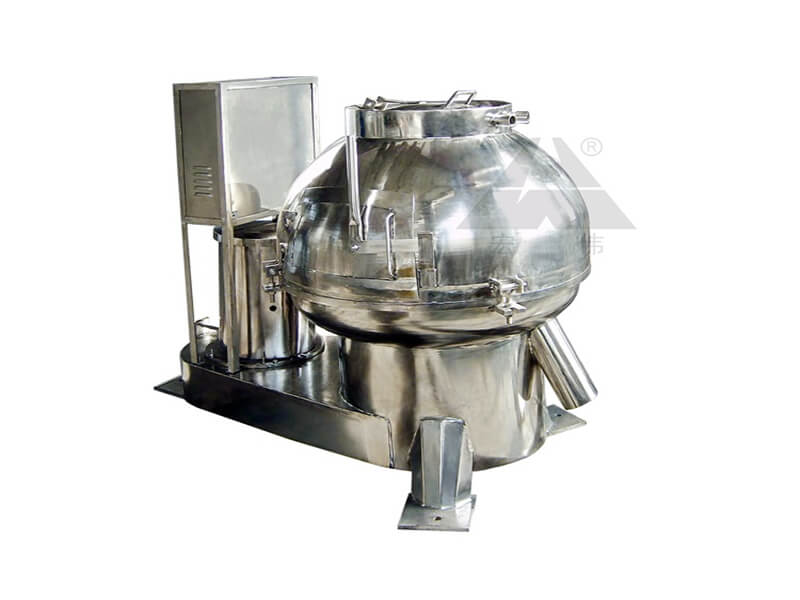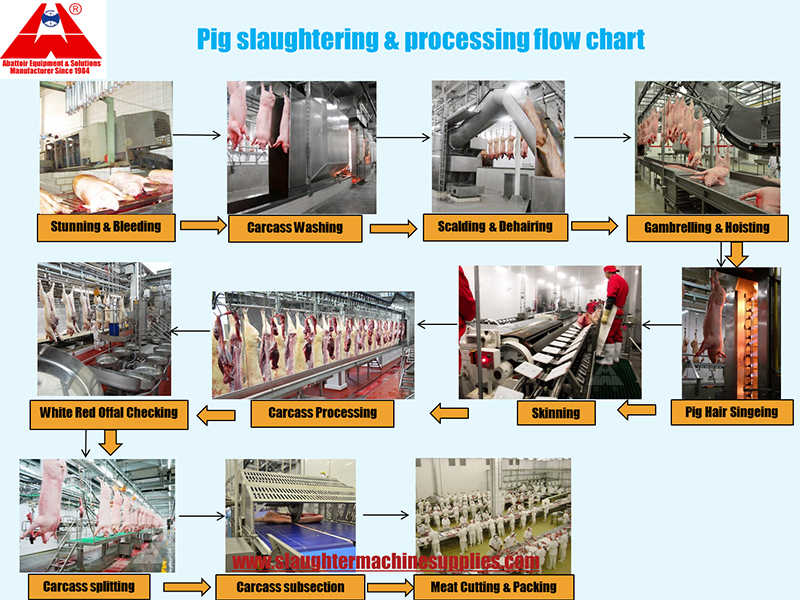
In the previous article, we discussed the importance of synchronized quarantine in a pig abattoir slaughter line. Now, we will delve into the crucial aspect of pig slaughter line process: By-product Processing. This stage involves the efficient utilization and processing of both white and red viscera, ensuring minimal waste and maximizing the value of each part of the pig. (What are the main pig slaughtering equipments needed for modern hog abattoir? )

White Viscera Processing
- Handling the White Viscera: The qualified white viscera, including the stomach or tripe contents in the belly and intestine, is directed to the white viscera processing room through a designated chute. It is essential to ensure that only high-quality white viscera enters this processing area.
- Air Conveying System: To facilitate the movement of stomach and tripe contents, compressed air is used in an air delivery tank. This air conveying pipe system effectively transports the contents for further processing.
- Tripe Washing: In the white viscera processing room, the pig tripe and stomach undergo a thorough washing process using a specialized machine known as a tripe washing machine. This step ensures cleanliness and hygiene. Once cleaned, the intestines and tripe are appropriately packed for storage in a cold storage or fresh-keeping warehouse.

Red Viscera Processing
- Handling the Red Viscera: The qualified red viscera, which includes the heart, liver, and lungs, is conveyed to the red viscera processing room through a designated chute. Similar to the white viscera, it is crucial to maintain the quality of the red viscera during handling and processing.
- Cleaning and Storage: In the red viscera processing room, the heart, liver, and lungs are carefully cleaned, ensuring the removal of any impurities. After the cleaning process, they are packed and stored in a cold storage or fresh-keeping warehouse. This storage ensures the preservation of the red viscera’s freshness and quality until further processing or distribution.
Significance of By-Product Processing
Efficient by-product processing plays a vital role in the overall sustainability and profitability of the pig slaughter process. By maximizing the utilization of each part of the pig, abattoirs can reduce waste and generate additional revenue streams. Here are a few key points highlighting the significance of by-product processing:
- Economic Value: By processing the white and red viscera, abattoirs can transform these by-products into valuable commodities. The processed tripe, stomach, heart, liver, and lungs have various culinary applications, both domestically and internationally. This adds economic value to the slaughter operation.
- Environmental Considerations: Proper processing of by-products reduces environmental impact by minimizing waste and the need for disposal. When managed efficiently, the by-products can be repurposed or recycled for various industrial purposes, such as fertilizer production or biofuel generation.
- Compliance with Regulations: Strict regulations govern the handling and disposal of slaughterhouse waste. Effective by-product processing ensures compliance with these regulations, avoiding penalties and maintaining a positive reputation for the abattoir.
Conclusion: By-product processing is a critical stage in the pig slaughter line, focusing on the efficient utilization and processing of both white and red viscera. Through careful handling, cleaning, and storage, abattoirs can extract maximum value from these by-products while minimizing waste and environmental impact. By embracing effective by-product processing, slaughterhouses can contribute to sustainable practices, generate additional revenue streams, and comply with regulatory standards. In the next article, we will explore the importance of white carcass chilling in the pig slaughter line process.
If you want more information, please contact us by email or WhatsApp. You can add our WhatsApp by scanning the QR code on the right.

